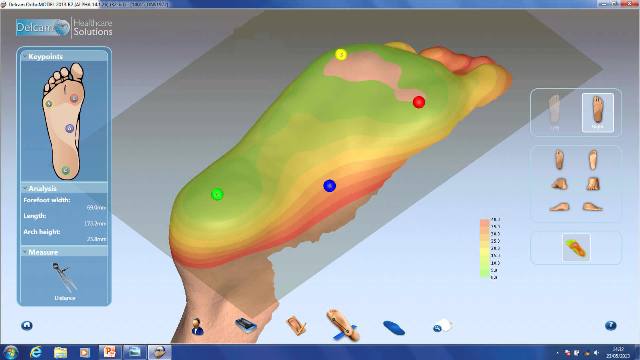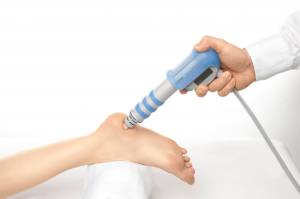Plantar Fasciitis… What is It?
Heel pain is the most common foot problem seen at Podiatry Care. The most common form of heel pain is plantar fasciitis. This type of heel pain can cause you to limp out of bed in the morning and, if allowed to persist, can make walking very difficult.
Common Terms used to describe Plantar Fasciitis…
Other names for plantar fasciitis include Policeman’s Heel and heel spurs. Plantar fasciosis, plantar heel bursitis and heel spur syndrome are other names used occasionally. These terms are often used to broadly describe this type of heel pain beneath the sole of the foot.
What Causes Plantar Fasciitis?
Inflammation of the plantar fascia can occur as a result of:
- Overuse injury or repetitive strain;
- Arthritis and other medical disorders;
- Sudden injury;
- Overloading
- Hyperpronation can be an exacerbating factor contributing to overuse or overloading
Recent studies have shown that plantar fasciitis rarely occurs in isolation. Other conditions such as tendinosis, bursitis and bone bruising may be present in conjunction with plantar fasciitis. Heel stress fractures can also cause similar symptoms. This is why an accurate examination by an experienced Podiatrist is important.
How To Treat Plantar Fasciitis…
Plantar fasciitis treatment involves a combination of various different treatment measures. No single treatment appears to be consistently successful in eliminating plantar fasciitis on its own. For example… anti-inflammatory medication may help some plantar fasciitis sufferers in the short term, but it never works for everyone. For most people, oral medication seems to make no difference at all.
So what is it that works in the treatment of plantar fasciitis?
Podiatry Care has treated thousands of cases of plantar fascial pain over the last three decades. Over 100 years of combined clinical experience between all of our Podiatrists has resulted in the development of a specific conservative heel pain treatment program with an outstanding success rate of well over 96%.
Initial plantar fasciitis treatment may include:
- R.I.C.E. rest from any competitive sport or prolonged standing;
- Ice massage at the end of a long day on your feet or after sport;
- Compression using taping or compression bandaging;
- Elevation at the end of the day or after activity.
- Massage of the plantar fascial ligament or plantar aponeurosis;
- Specific stretching and strengthening exercises are utilised
- Toe extension exercises can help if performed correctly and at the right time. These exercises can aggravate if performed incorrectly or at the wrong time during the rehabilitation process.
- Activity modification is helpful especially when climbing steps or stairs.
- Backward arching of the toes needs to be prevented to prevent reinjury of the plantar fascia.
More advanced plantar heel pain treatment may include:
- Specific taping of the arch can help in the short term.
- Foot orthotics are now produced with laser accuracy and are often essential to unload the plantar fascia and inflamed plantar heel structures.

- Bracing or splinting. This is only usually needed when the condition is chronic.
- Extracorporeal Shockwave Therapy (ESWT) is a treatment option which may be needed in about 5 to 10 percent of cases which do not respond to conservative measures. Extracorporeal Shockwave Therapy is often helpful when plantar fasciitis has been present for longer than six months. Podiatry Care has specific accreditation in the use of this heel pain treatment modality.

Extracorporeal Shock Wave Therapy
- Cortisone injections under ultrasound guidance has been found to help on occasion, however, this treatment tends to mask the true causative factor.
Plantar fasciitis treatment is often successful and rarely requires surgery. Call Podiatry Care to arrange a time to get your heel pain back under control or book an appointment now online.


